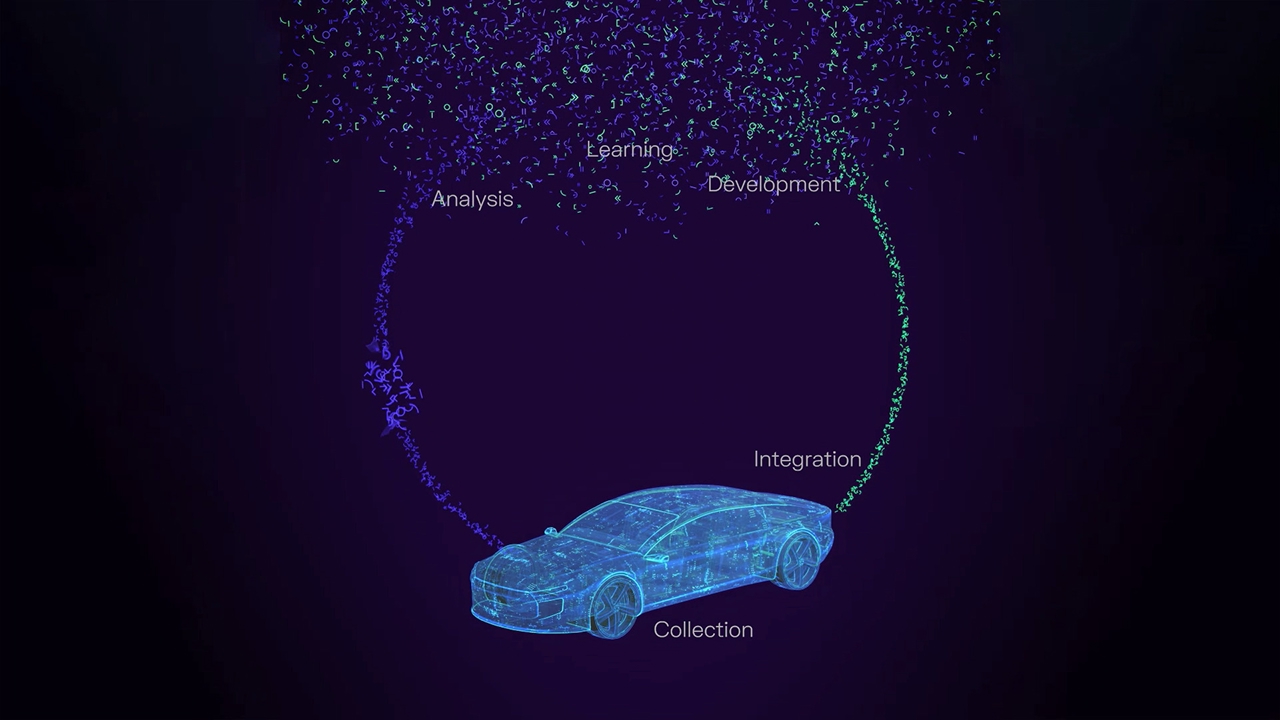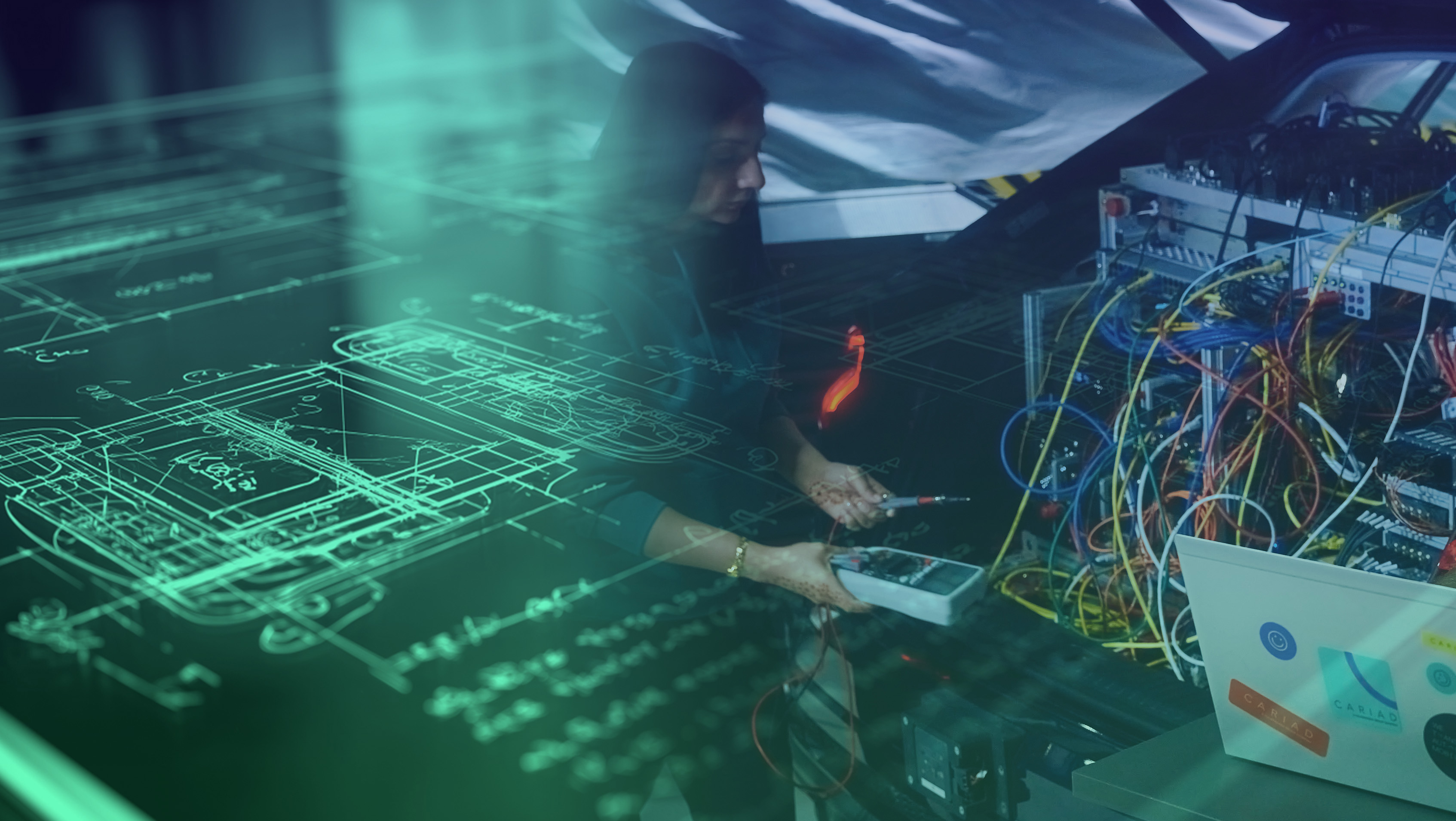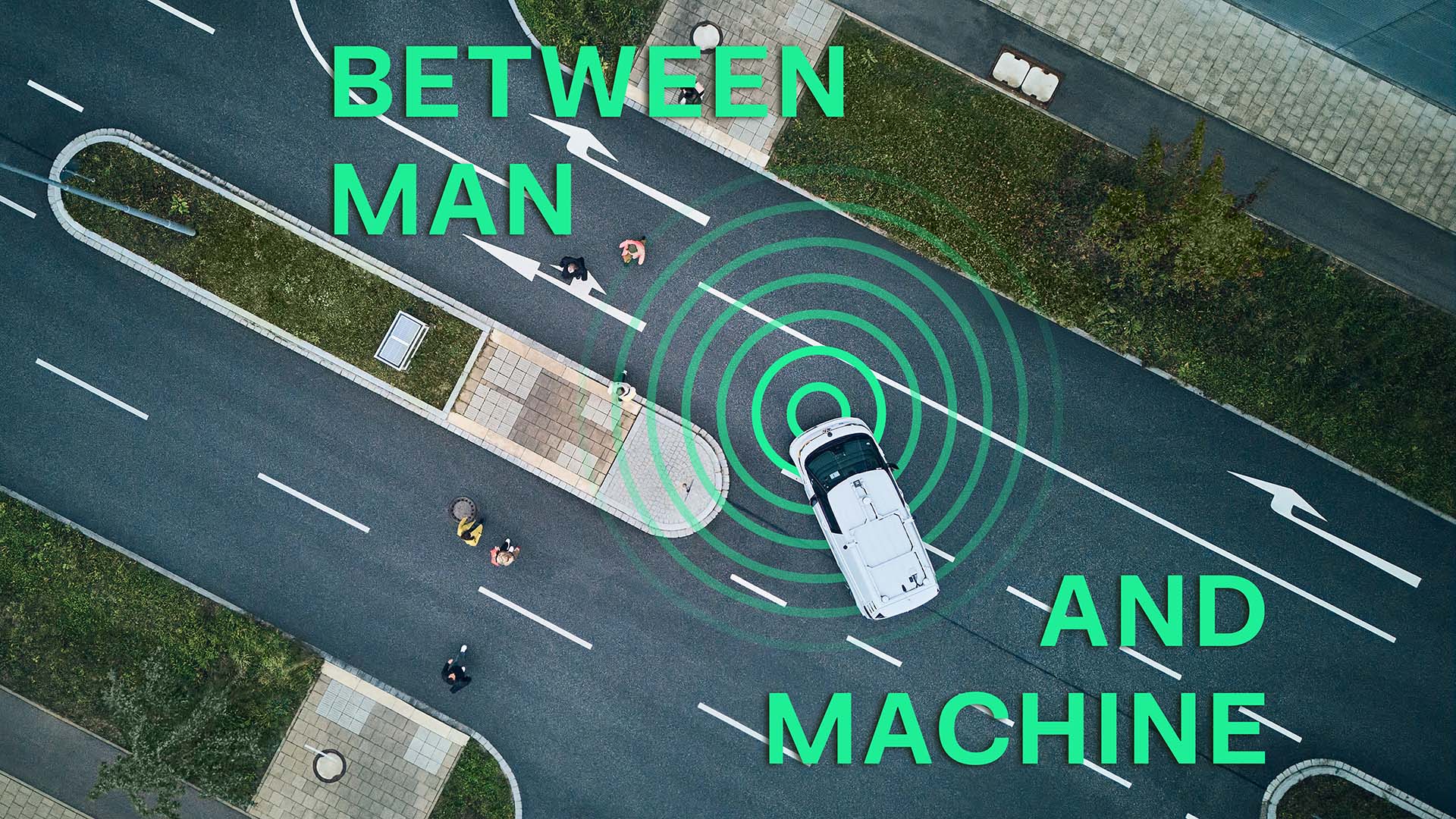How the Big Loop powers data-driven development for ADAS/AD
How can we find the value in data to make automated driving even safer and more comfortable? Stefan Sicklinger, Head of Division – Big Loop and Advanced Systems at CARIAD, explains the advantages of intelligent data collection – and how it’s already improving ADAS/AD functions of the future today.

We believe it’s time to take vehicle data acquisition to the next level. In traditional setups, every single bit of data detected by the vehicle’s sensors is recorded locally in the vehicles and physically stored on a daily basis. This approach is very expensive and requires huge amounts of storage capacity. It’s also extremely inefficient and presents developers with far too much data.
At CARIAD, our solution to this problem is the Big Loop – an intelligent data aggregation system for our future customer fleets and supports data-driven development. The system greatly reduces the amount of data gathered. It’s also a highly sustainable way of collecting data. On the one hand, we’re able to reduce the amount of computing power needed inside the vehicle. And in our world of electric vehicles, less energy consumption means a longer driving range. On the other hand, by uploading to the cloud only a few snapshots of data out of the vast amount that our sensors record every hour, we’re using less energy in our data centers. But at the same time, we’re still able to sustain the high level of quality of extracted information. The system also allows the data to be immediately available to our software engineers for development purposes.
The Big Loop is spread across the various layers of our unified and scalable E3 2.0 architecture that Volkswagen Group brands will introduce in the middle of this decade – from hardware and software within the vehicle, including the operating system (VW.OS), to data centers in the cloud (VW.AC). We’re using this system to develop, test and deploy software for automated driving functions that can be easily released to customers’ vehicles via over-the-air-updates.
Before diving into the Big Loop process, it’s important to first understand two key parts of the system, namely the protected area blade and INSTINCT.
Protected area blade
The protected area blade is a piece of hardware in the vehicle. It’s located within the scalable compute platform (SCP) and sits next to the ADAS blade, responsible for all ADAS/AD full driving stack functionalities. Because the protected area blade is isolated from any interference from the rest of the system, we can achieve the highest safety standards and, at the same time, use the protected area for development purposes. The area offers two main advantages for development:
- Shadowing – We can take a pre-release version of software and monitor it under real-world conditions to see how a potential piece of software is performing on the road.
- Power – We can leverage the compute power of the protected area blade to carry out intelligent data aggregation and collection.
 The proteced area blade ensures highest safety for ADAS systems
The proteced area blade ensures highest safety for ADAS systems
INSTINCT
Inside the protected area blade is a deep neural network-based software component called INSTINCT (IN SiTu INtelligent data CollecTor). This piece of software analyses, in real time, all of the sensor data streamed throughout the vehicle to identify which kind of data samples are of interest to us.
INSTINCT is continuously on the lookout for ‘known unknowns’ as well as ‘unknown unknowns’. An ‘unknown unknown’ is an extremely unique and unpredictable situation or object on the road for which the vehicle cannot be trained.
Imagine, for example, a self-driving car is out on the road. Its cameras, radars and other sensors are detecting and identifying the world around them, including pedestrians and vehicles. All of a sudden, the car approaches a pink elephant. We all know that pink elephants don’t exist. But INSTINCT is capable of detecting something as fictitious as pink elephant as an unknown unknown. It doesn’t need to know to specifically look out for pink elephants. Instead, it can judge these kinds of objects by means of uncertainty. We’ll go into more detail on these situations in a future blog post.
 INSTINCT can see the unkown unknown like pink elephants
INSTINCT can see the unkown unknown like pink elephants
Follow the data stream
Now, let’s take a look at the Big Loop process and follow the data stream. The cycle begins in the vehicle with INSTINCT, which identifies a data sample provided by our sensors that is of interest to us. A snapshot of that data is then preserved within the SCP and sent to the VW.AC. Once the data arrives in the data lake, we’re able to use multiple different consumption pipelines to leverage the information and value of that data. It’s even possible, if needed, to apply machine learning techniques, as well as make use of simulation and replay.
On the basis of this collected data, we can develop an update for the customer feature. After testing and validation, it’s sent via an over-the-air update back into the vehicle. At the same time, we also ensure that INSTINCT is updated. And, with this, the Big Loop has completed its first round. This cycle continues to constantly keep the vehicle up to date with the latest software.
Laying the foundations
One particular challenge with data-driven development inside our Big Loop is not related to the technology itself, but rather to the way in which we develop it. Product cycles in the automotive industry are vastly different to those of software companies. Building a physical car and putting it on the road takes much longer than developing and releasing software by means of agile working methods.
To tackle this challenge and bridge the gap between the product cycles, we’re already decoupling the development of hardware and software. But in addition to this, our developers have created a system that can be retrofitted to existing vehicles and platforms that are already driving on the roads. This fleet of vehicles is pioneering our Big Loop technology today before it’s rolled out in the unified and scalable CARIAD platform.
The Big Loop, together with the pioneering fleet, will allow us at CARIAD to leverage end-to-end active learning and continuous data-driven development for vehicle software and automated driving. We’ll bring the system from the pioneering fleet into the next-generation architecture and to the entire product portfolio of the Volkswagen Group. Ultimately, this will help us to offer even safer, more sustainable and more comfortable rides to our customers.
 CARIAD software platform pioneer fleet
CARIAD software platform pioneer fleet
Our developer teams are rapidly expanding. Do you have experience in the areas of machine learning, data science, parallel computing, scientific computing or data engineering, and fancy the chance to work with us on the Big Loop?




